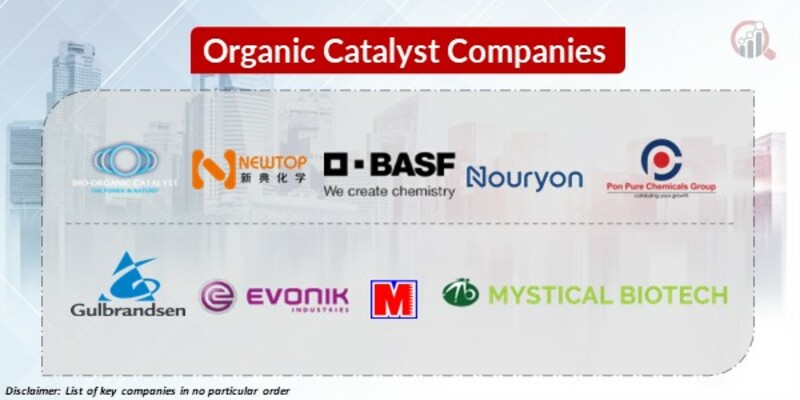
The organic catalyst market, where nature's ingenuity meets industrial might, is a crucible of dynamic competition. These eco-friendly alternatives to traditional metal catalysts are driving a revolution in green chemistry, propelling applications across sectors like pharmaceuticals, fine chemicals, and agrochemicals. Navigating this landscape requires delving into the strategies, market drivers, and recent developments shaping the fight for market share.
Strategic Alchemy: Brewing Differentiation in the Organic Catalyst Cauldron:
Bio-Innovation: Companies like Novozymes and Biocatalysts Ltd. are concocting novel biocatalysts from diverse natural sources like enzymes and microbes, catering to specific chemical reactions and unlocking new possibilities for sustainable synthesis.
Tailored Catalysts: Market leaders like BASF and Evonik Industries AG are refining their offerings by developing custom-designed catalysts for individual client needs, optimizing efficiency and product yields.
Technological Fusion: Integrating cutting-edge technologies like AI-powered catalyst design and high-throughput screening is key for companies like LanzaTech and Chiral Resources, accelerating catalyst development and optimizing performance.
Sustainability Focus: Green credentials are a potent differentiator. Companies like BioAmber and Green Chemistry are prioritizing renewable feedstocks, eco-friendly production processes, and catalyst recyclability, appealing to environmentally conscious customers.
Strategic Partnerships and Acquisitions: Collaboration is brewing innovation. Recent examples include the partnership between DSM and Codexis to develop biocatalysts for bio-based polymers and the acquisition of Synomics by Lonza, expanding their biocatalysis portfolio.
Market Share: The Elixirs of Success:
-
Technical Performance: Catalyst's selectivity, activity, and stability in specific reactions directly influence market share.
-
Cost Competitiveness: Efficient production processes, access to low-cost renewable feedstocks, and recyclability determine price competitiveness.
-
Product Range and Application Diversity: Offering a diverse range of catalysts for various chemical transformations and industries expands market reach.
-
Regulatory Landscape: Navigating stringent environmental regulations and intellectual property compliance is crucial for market success.
-
Geographical Presence: Building strong distribution networks and establishing partnerships in key growth regions like Asia Pacific is essential for capturing market share.
Key Players
Some of the key players operating in the global organic catalyst market are Bio-Organic Catalyst (US), Yangzhou Dajiang Chemical Co. Ltd (China), newtopchem (China), BASF SE (Germany), Nouryon (The Netherlands), Pon Pure Chemicals (India), Gulbrandsen (US), Evonik Industries AG (Germany), Mitushi Biopharma (India), Mystical Biotech Pvt Ltd (India), Novozymes (Denmark), AB Enzymes (Germany), DSM (The Netherlands), Aum Enzymes (India), and F. Hoffmann-La Roche Ltd (Switzerland).
Recent Developments:
July 2023: Novozymes unveils a new enzyme catalyst for bio-based plastic production, boosting sustainability in the polymer industry.
September 2023: The EU strengthens its regulations on bio-based products, impacting the market dynamics for sustainable catalysts.
October 2023: The US government announces grants to support research and development of biocatalysts, propelling technological innovation.
December 2023: The global organic catalyst market shows signs of a slowdown due to economic uncertainty and geopolitical tensions.












